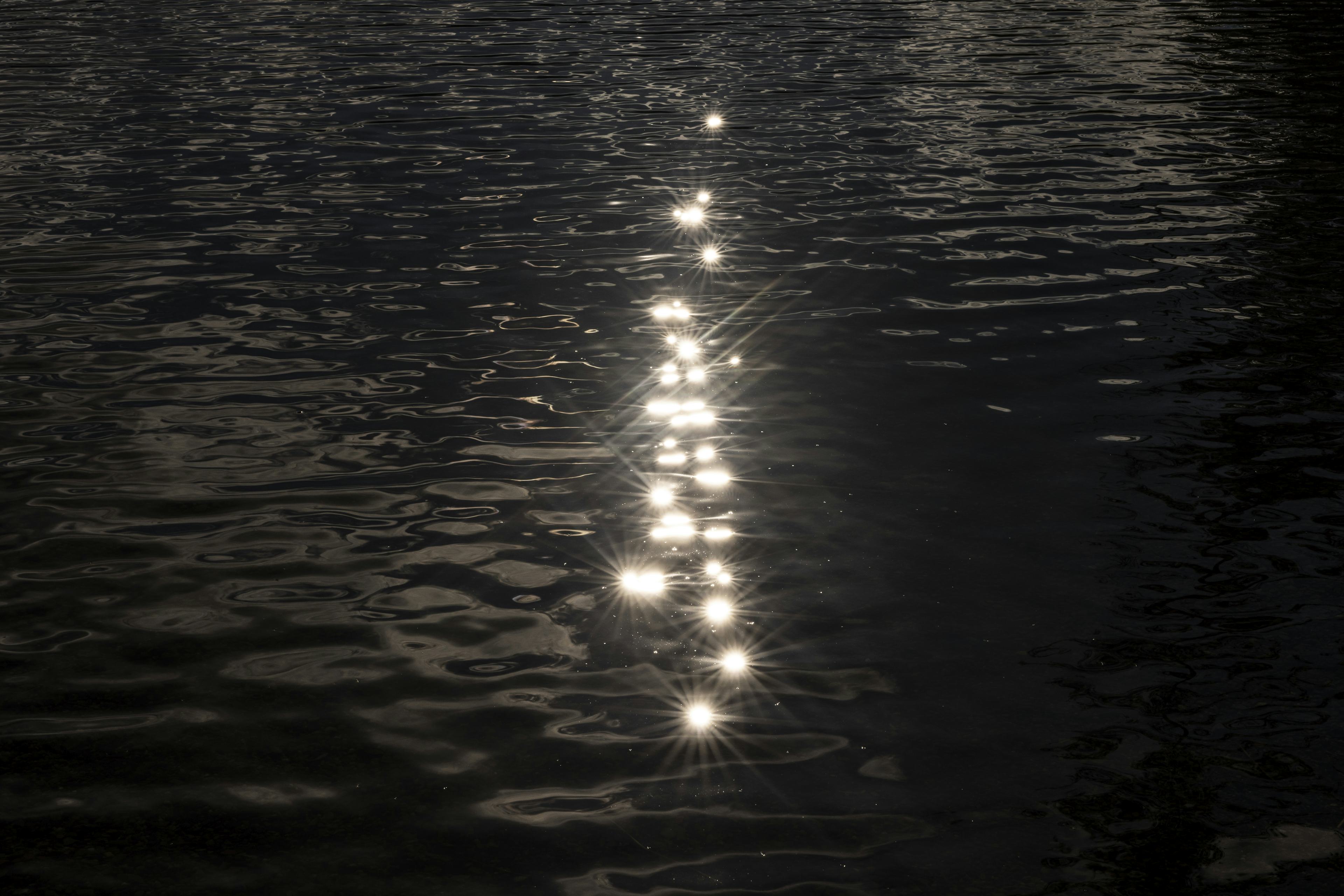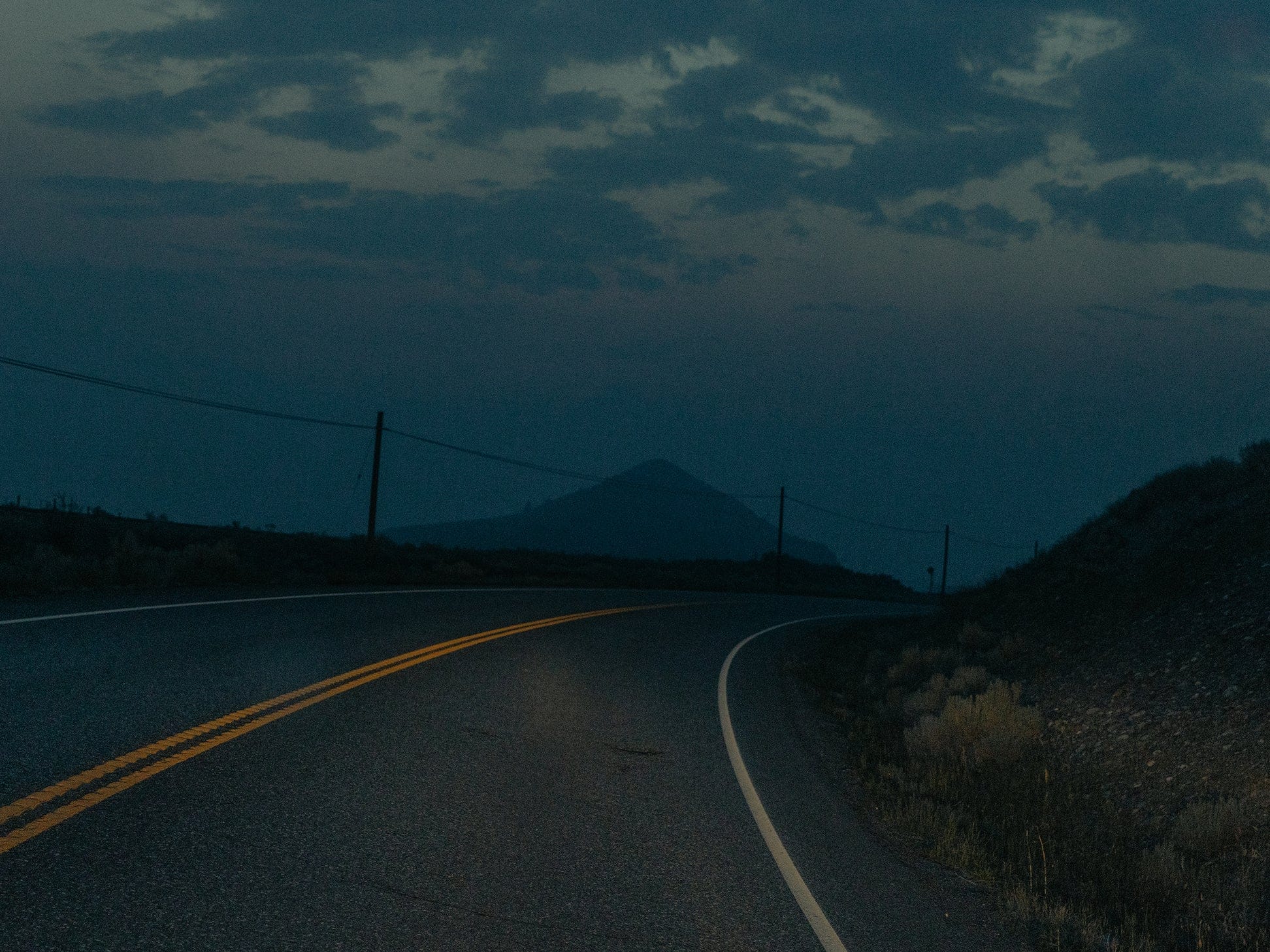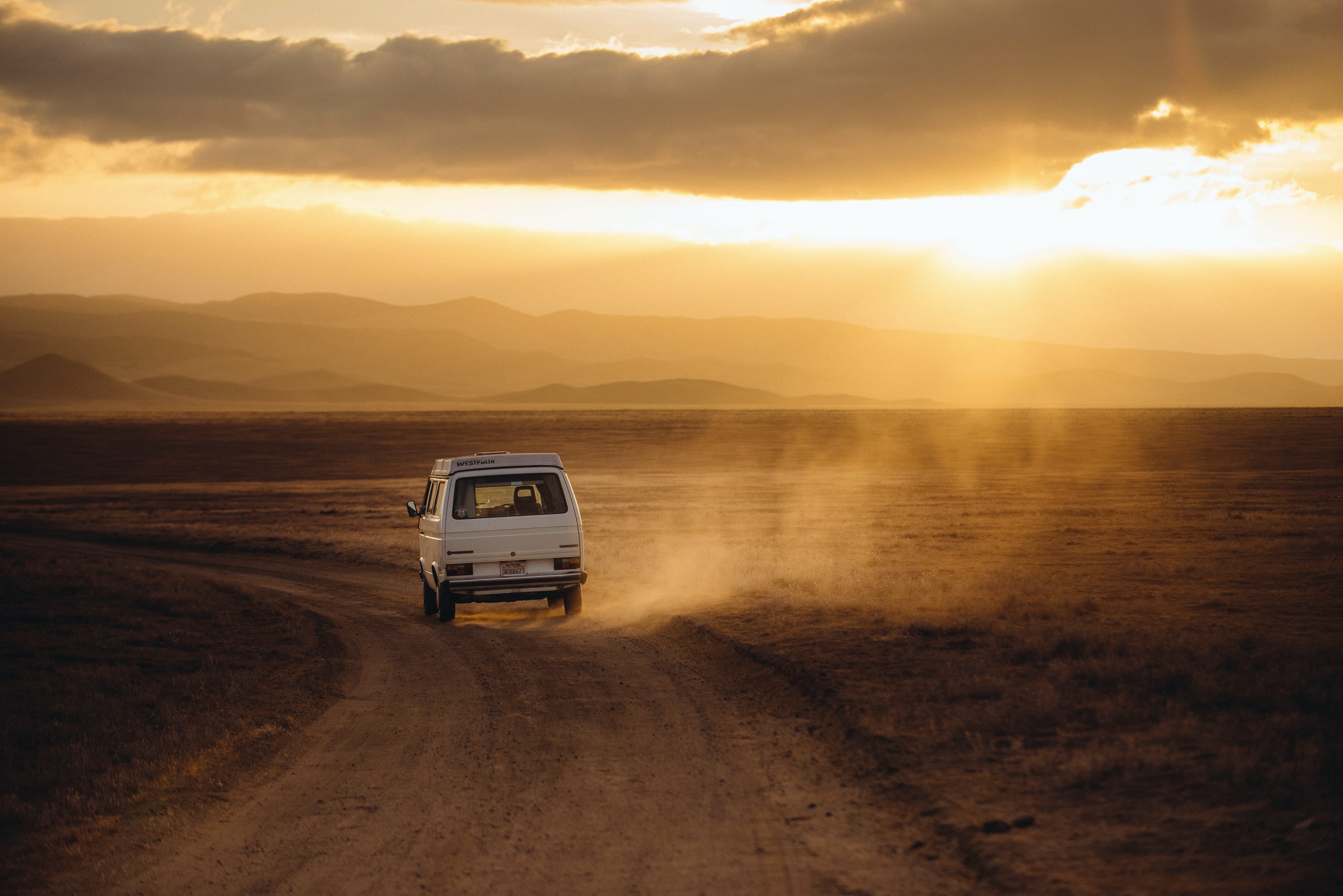Finding First Light: Sunrise in Maine
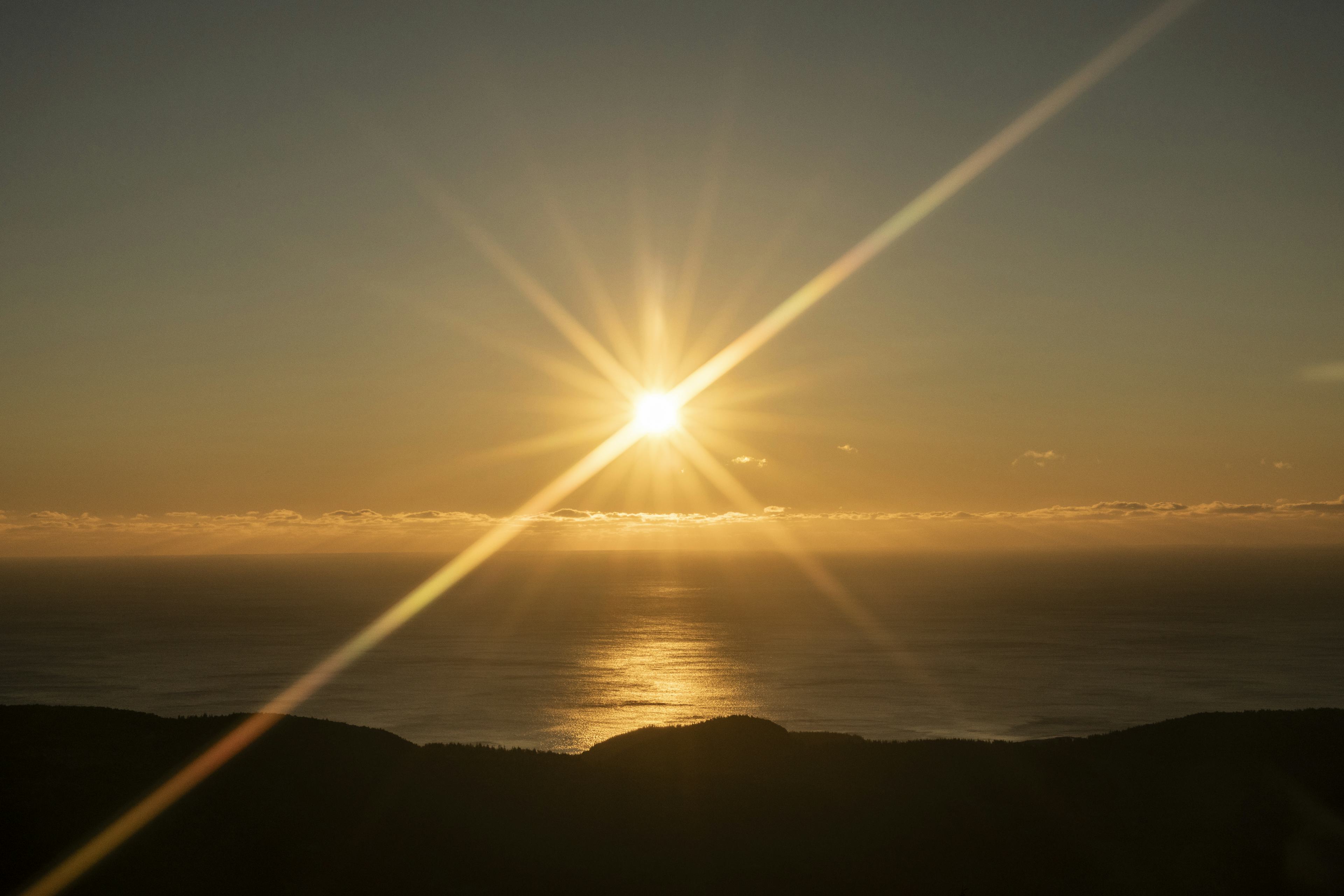
ROAD-TRIPPING ALONG THE RAGGED EDGE OF MAINE, ONE AUTHOR WONDERS: WHAT’S SO SPECIAL ABOUT A SUNRISE? THEN IT DAWNS ON HIM.
SHROUDED IN DARKNESS, guided by the red lights of two-dozen 400-foot wind turbines, I hiked towards the undulating ridge of Mars Hill. It was a Saturday night in early November. Behind me, the Northern Maine farm town named for the little mountain—Mars Hill, population 1,400—glowed in the dark like a medieval hamlet. On the hill’s far side, similar lights from similar towns in New Brunswick. Unlike Don Quixote, Cervantes’ windmill-chasing hero, I hadn’t come to slay imaginary giants. But drenched in a full sweat, charging solo into midnight, I wondered whether Quixote’s quest was so much madder than mine: to be the first person in the country to see the sun rise.
I’d set off on my solar voyage from my hometown of Brunswick, some 250 miles to the south, in a part of Maine that people in the state’s far-north Aroostook County sometimes refer to as “Downstate.” The plan: to visit, on consecutive mornings, the three places in Maine that lay competing claim to being the first spot in the U.S. touched by the rays of the sun. My road trip would cover 700 miles and take me to Acadia National Park’s Cadillac Mountain, the highest peak on the U.S. Eastern Seaboard; to the country’s easternmost peninsula, in what bills itself as “Sunrise County”; and to landlocked Mars Hill, which has claimed the mantle of “Where the Sun Rises First in the USA.”
I ambled down a dirt service road, across a few brittle patches of snow, until I stumbled up to a lonely lean-to on the sporadically blazed International Appalachian Trail— the famous footpath’s lesser-known extension into Canada. I made a hasty camp, then set my alarm for 5 a.m. With temps in the low 20s—and a broken metal panel banging out a four-count on the turbine above me—sunrise couldn’t come soon enough.
According to the Farmer’s Almanac, it would happen at exactly 6:15 a.m. Also according to the Almanac—and to others who’ve tried to calculate this precisely—the sunrise wouldn’t technically hit Mars Hill first. Not in November, anyway, nevermind the town slogan, since winter’s hemispheric tilt sends the dawn’s first rays slightly farther south. Mars Hill, according to brains at the National Weather Service and elsewhere, claims the honor only from late March to mid-September.
In the summer, though, I might have been tempted to sleep in. The next five hours passed by in a shivering blink. I crawled out of my tent in the semidarkness, scrambled down a scree trail to a ledge, and watched a glowing pink band trim the distant New Brunswick horizon. I checked my watch: 20 minutes to go.
The night before, during a pit stop at a local Elks Lodge, I'd chatted with a man named JJ Schools about my triple-sunrise quest. Schools grew up in Aroostook, a rural county of farms, forests and Francophone pockets, about the size of Rhode Island and Connecticut combined. At 21, he left what Mainers simply call “The County” for a 23-year career at sea. As a chief petty officer in the Navy, Schools had watched many sunrises from the bridge of the USS Enterprise and George H.W. Bush. Sometimes, he told me, he’d burn long hours on duty by pondering alternate ways to visualize the universe that challenged the Copernican model. “What if,” Schools surmised, tilting his flattened hand on an imaginary axis, “Earth was actually more like a massive plane?” The sun could still rise and set, he imagined, as the plane titled back and forth. He shrugged. “I’m not one of those Flat Earth guys,” he assured me, as an old friend of his covered Steve Miller Band’s “Space Cowboy” at the front of the bar. “But it’s always interesting to think up different ways of seeing things.”
Perched atop my little ledge, gazing across a grid of brightening fields, I felt like I just might slide off Schools’ imaginary plane and spend a Sunday in Canada.
In the distance, the horizon shifted from pink to rose. As 6:15 came and went, any singular ball of orange quickly dissolved into the tumbling gray-blue clouds. To commemorate the anticlimactic moment, I took a video of the muted light, framed by the giant turbines, then sent it to a few friends. One of them, an early riser, texted right back. “OMG. Crazy up there. You remind me of a sci-fi Little Prince!” Later, I learned that Antoine de Saint-Exupery, author of The Little Prince, based his otherworldly hero on a younger version of himself, who adults had nicknamed Le Roi Soleil—the King of the Sun.
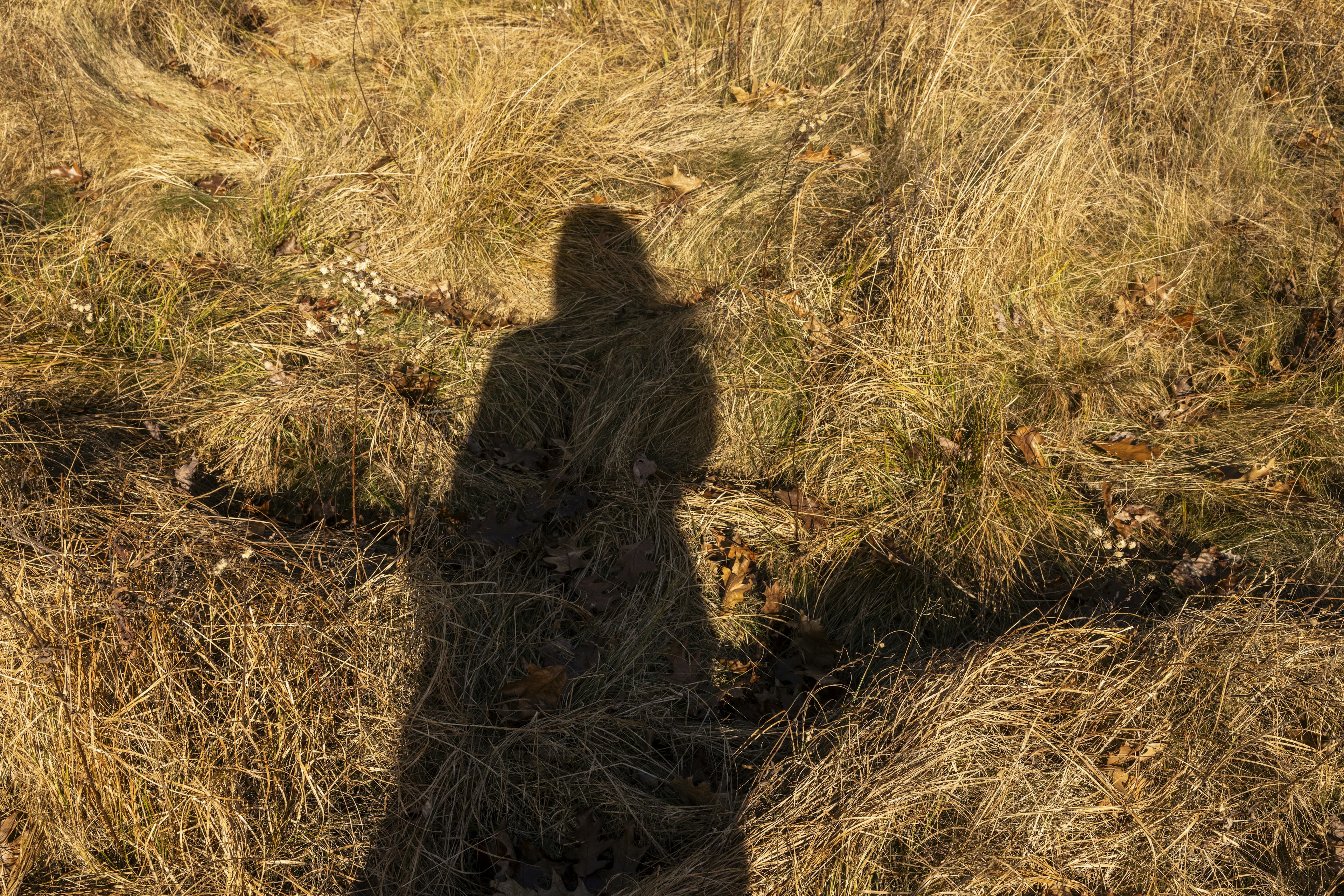
ON MY WAY OUT OF MARS HILL, the Sunday streets were empty but for a few old-timers idling in trucks at the gas station. Outside of town, I counted 11 roadside potato stands, offering 5-pound bags for the semi-inconvenient, cash-only price of six bucks.
Thirty miles on, at a truck stop at the crossroads of Interstate 95 and U.S. Route 1, I tested the theory that a local diner often provides an accurate cross-section of regional culture. The menu boasted three types of poutine, the savory Quebecois treat of fried taters slathered in cheese curds and gravy, what you might call the Northern Maine nacho (available toppings: seared ground beef, maple chicken, bacon). At the table to my left sat a family—mom, dad, son—in heated banter over the state of their boy’s mullet. “I still need to blend it,” the mother said, flicking the boy’s pelt. She gestured admiringly to her husband. “He used to have one just like yours, but it was permed.”
Over the next hour, the booths filled with grandfatherly men in nearly identical outfits of Levi’s dad deans, cowboy boots, and plaid shirts. Their grandchildren plowed the tabletops with little John Deere tractors. Before paying my bill, I engaged my server in the pastime known as the Maine Name-Game. “Oh yes,” she said, when I mentioned a friend who’d grown up nearby. “I used to hold her as a baby.”
For the next 40 miles, I was about the only car on Route 1. The side yard of every 10th house seemed devoted to a small-time logging, firewood, and sawmill operation. A few miles north of Orient, population 141, someone was selling 29 acres that included a house on the verge of collapse and a decommissioned silver hearse. Just up the road, a little girl in rubber boots led a white pony around a muddy pasture, both of them shrouded in morning mist.
I crossed into Washington County, the heart of the rugged, rural coastal region that Mainers simply call Down East. Toward noon, I pulled up to Karen’s Main Street Diner in Calais, the last border town before the state’s eastern edge skirts the ocean rather than Canada. As I dug into a bowl of fish chowder, a Passamaquoddy man helping in the kitchen that weekend, the son-in-law of one of my servers, asked what I was doing in town. I told him about seeing all three first sunrises, about how I’d spent the night before on Mars Hill.
“No way!” he scoffed. “We get way better ones down here.” He said I should check in with folks in his hometown of Sipayik, on the Passamaquoddy Pleasant Point Reservation, if I wanted to learn more about the Passamaquoddy relationship to sunrise.
Dwayne Tomah, director and curator of the Sipayik Museum, met me outside his house, overlooking the Dennys River. A renowned authority on the Passamaquoddy language, Tomah emphasized that the Wabanaki—the four tribal nations in Maine, the name meaning “People of the Dawn”—have always considered the sun not only a resource but a relative. “It’s so important to honor the sun, to have a relationship with the sun,” Tomah said. "You can feel the heat on us, the comfort. It’s the spirit, it’s the energy. There’s so much medicine—it’s powerful stuff.”
The youngest living fluent speaker of his people’s language, Tomah shared with me the Passamaquoddy word for ceremony: olotahkewakon. “We have always had our ceremonies at sunrise,” he said. The oldest archaeological sites suggest a Wabanaki presence in what’s now Maine going back 13,000 years; Tomah and others trace Passamaquoddy origins to “time immemorial.”
“The sun provides for us,” he went on. “This is Waponahkik—the Dawnland. We’re the people of the dawn, the first people to see the sun rise.” He gestured to a sun that, in a rare cloudless sky, was as bright as it had been in weeks.
“It’s so important to honor the sun, to have a relationship with the sun.”
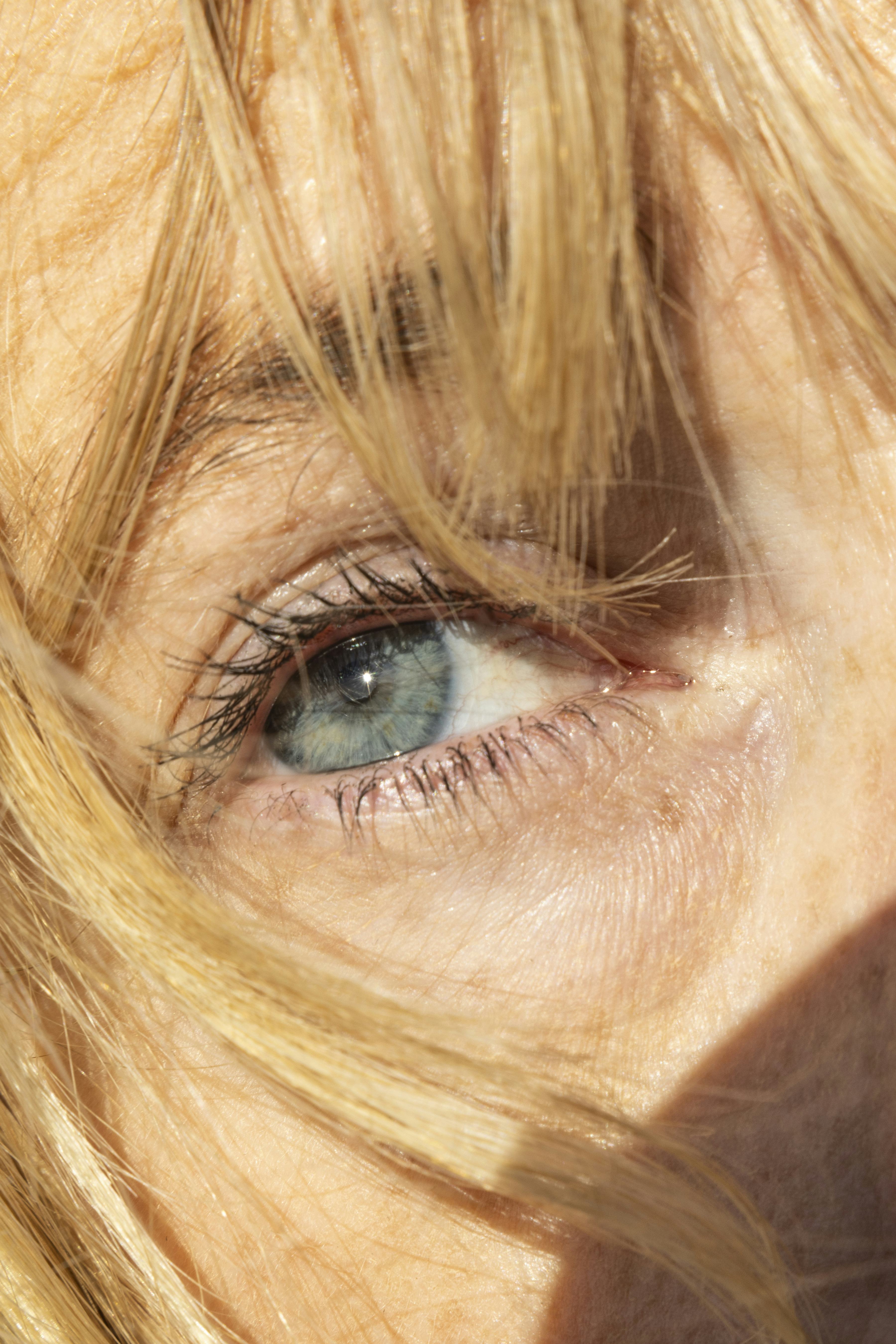
AS I ROLLED INTO THE TOWN OF LUBEC, nightfall dropped like a curtain over the adjacent Bay of Fundy. Once the hub of a flourishing canning industry, the town has struggled in the decades since its collapse. A few years after the last sardine cannery closed in 2001, I played a couple of gigs in an infamous dive bar on Water Street called Annabelle’s. Across from the now-defunct saloon, it came as a nice surprise to find Lubec Brewing Company packed to the walls with locals—and on a winter Sunday evening. A singer-songwriter named Skip Guptill played a small stage: strictly originals and traditional ballads, part of the owner’s scheme to avoid paying licensing fees to hire artists who play covers. After closing with a surprisingly tear-jerking rendition of “The Parting Glass,” Guptill cajoled the crowd into the street for a group-sing of “Barrett’s Privateers.”
On my way out to the Lubec peninsula called West Quoddy Head, the easternmost point of the continental U.S., I stopped for fried halibut and scallops at Small Town Takeout, which Nicole and Derek Lyons run when they’re not out fishing. Soon, Nicole told me, they’d shut down for the winter. “It’s most locals’ favorite time of year,” she said. “The weather’s good, the bugs are gone, and”—though she stressed that she loves Lubec’s visitors—“we finally get our little town back.”
The last time a crush of winter visitors descended on Lubec was during Y2K, drawn by the fishing town’s aggressive marketing of itself as the first place in the nation to see the millennium’s new dawn. That’s when vying for dibs on first light turned cutthroat. Boosters in Bar Harbor, 100 miles southwest, argued that Acadia’s Cadillac Mountain deserved bragging rights. Nantucket lodged its own frivolous claim. The U.S. Naval Observatory, petitioned to settle the matter, sided with Cadillac, then backtracked to allow that a hill near West Quoddy Head probably sees the sunrise simultaneously.
I passed that hill on my way to West Quoddy Head Station, a former Coast Guard outpost converted into bunkhouse-style cabins. I pulled up to the Keepers Cottage, a neatly-shingled box nestled on the fringe of Quoddy Narrows. Judging by the day’s weather report, a good sunrise over the Bay of Fundy’s international waters looked promising. I set my alarm for 5 a.m.
At dawn, I sat on a bench beneath the austere lantern-glow of West Quoddy Head Light, a red-and-white-striped lighthouse that’s a Maine postcard stalwart. During the summer, the grounds can be packed with so many visitors as to require reservations. This time of year, though, I had the ocean views and frigid winds to myself. Unlike on Mars Hill, West Quoddy offers an uncluttered horizon, looking out across the U.S.–Canada boundary waters, over the ledge-like mirage of Canada’s Grand Manan Island. First light came quickly; several lobster boats steaming south got a look at it before me. And then the show really began.
A good sunrise, I learned at West Quoddy, comes in stages. First a thin pink line etched the distant shadowy contours of Grand Manan. Then the clouds took on the heat and turned orange, and that orange spread across the sky like a broad neon wash. I’d heard about the fabled “green flash,” an optical phenomenon sometimes seen in the seconds before sunrise, but I saw no flash, just the profoundly simple emergence of a yellow circle, one narrow chord at a time, rising in the sky as if lifted by an invisible string.
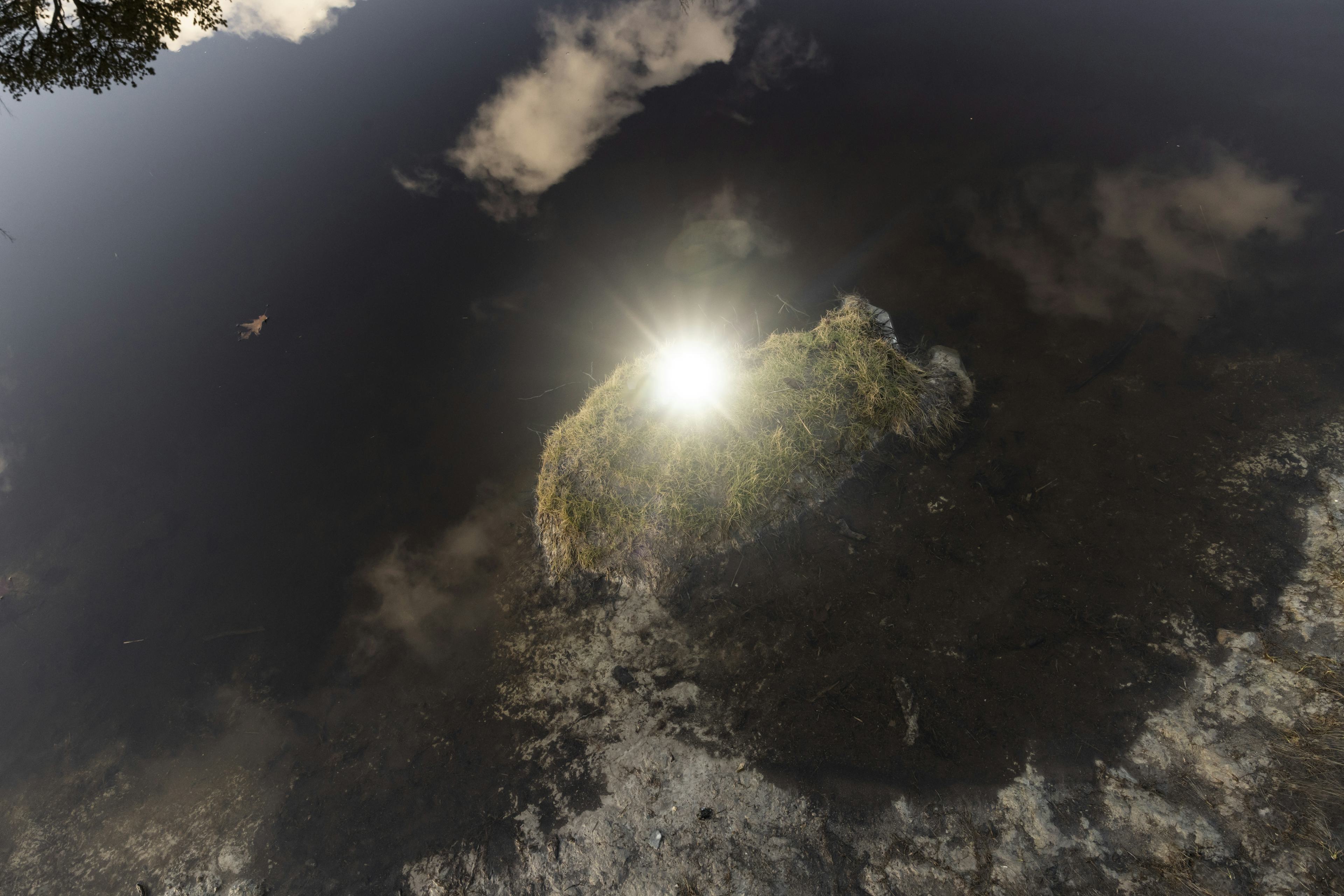
I’ve heard stories about observers bursting into tears during total solar eclipses. That morning, watching the sunrise over Grand Manan helped me understand why. Watching the tilted turning of the Earth elicits a rare sense of the sublime, a kind of brain-melting awe, that few other human-sized experiences can. Most of us have made peace with the knowledge that we’re just little beings occupying a huge, infinitely expanding universe. Seeing the proof unfold before you, behind a seascape as stunning as West Quoddy Head’s, in a moment of solitude shared only with distant boats—this allows you to feel that knowledge, with all of its strange and rapturous implications.
But I wasn’t totally alone. Tina Lash, a traveling respiratory therapist from South Carolina, had left Bangor at 3:45 a.m. to be at West Quoddy Head. She’d been in Maine since June. With a month left in her six-month stint, catching a proper first sunrise had been on her Maine bucket list. She’d had three near-misses on top of Cadillac Mountain—fog, rain, clouds—and several failed attempts in Lubec. Her luck this time left her speechless. A mother of five grown kids, she’d promised to capture and share her first sunrise on her iPhone. She’d set up on the hill behind me, framing the candy-striped lighthouse in the corner of the shot.
“Finally got it,” Lash said. To commem- orate the moment, she played a song, Van Morrison’s “Into the Mystic,” a tribute to her late father. Hearing the lyrics that morning—smell the sea, feel the sky—gave both of us chills.
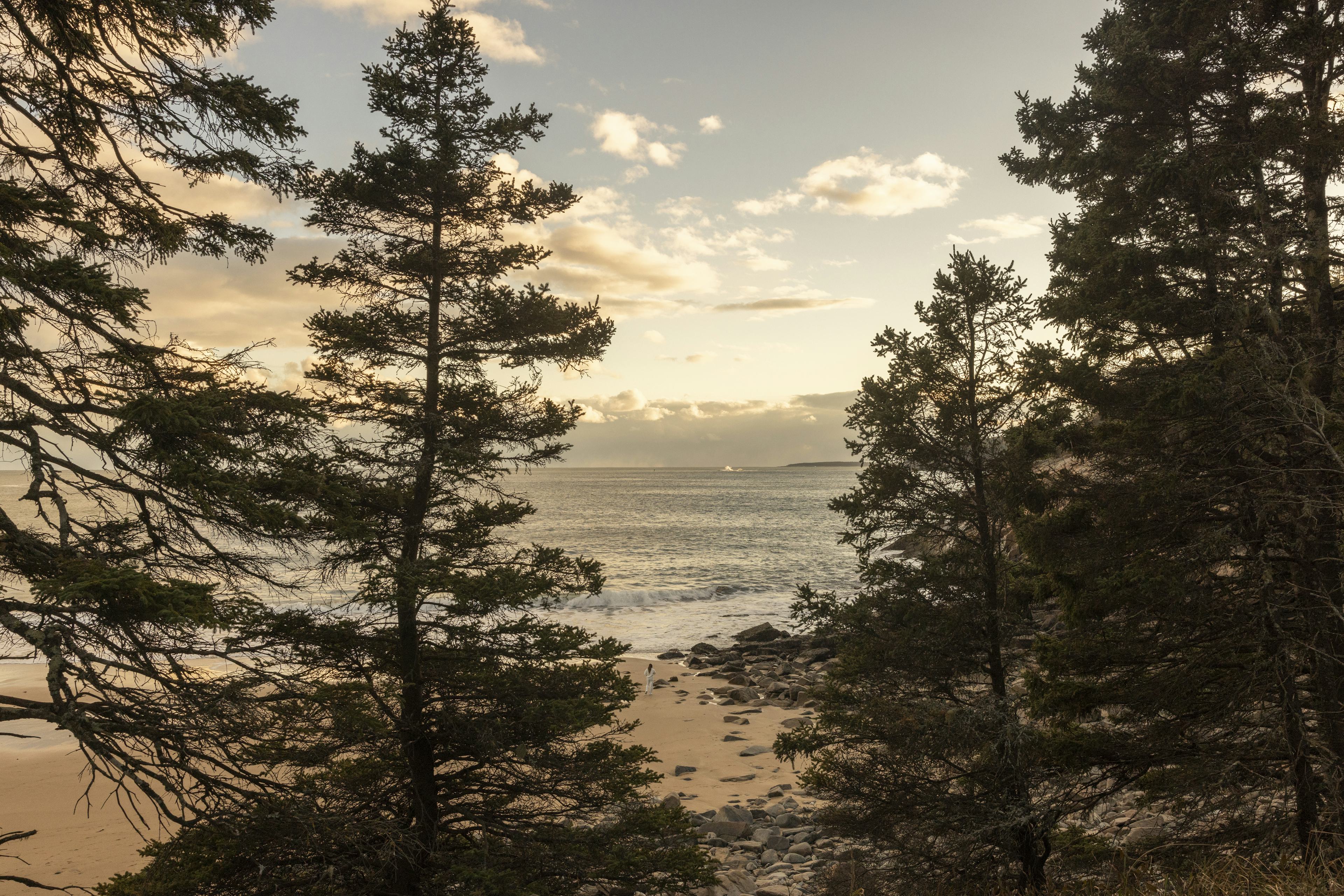
THERE’S NO WAY TO AVOID the twinge of deflation you feel driving south on U.S. 1, away from the time-capsule hinterlands of Down East and The County and back into the busier, more populous parts of Maine—and frankly, the rest of the country. Even passing through Whiting’s haunting blueberry barrens at dusk, before reaching the winding streets of Machias, population 2,000, signals the end of something. Well past nightfall, I arrived at the Bar Harbor Inn on Mount Desert Island, a genteel emblem of Maine’s late-19th-century origins as “Vacationland.” If the north country of Mars Hill offers one version of my state—deeply agricultural, as bound to Canada as to its Downstate neighbors—and the salty isolation of Lubec offers another, then the third leg of my sunrise quest seemed like an apt final chapter. Potatoes, fish and rusticating tourists: depending on the time of year, the sun rises first upon them all.
Cadillac, the almanacs and meteorol- ogists agree, is where the first rays land in winter. West Quoddy, in fact, wears the first-light crown for only a couple of weeks on either side of the equinoxes, in spring and fall, when the light comes in at an angle unblocked by Grand Manan. Nonetheless, I had made peace with the fact that my best sunrise was behind me. Weather on the summit was predicted to be horrible: rain, wind and more rain. The likelihood of seeing my hand in front of my face—never mind a golden orb over the Gulf of Maine—was slim.
But every good road trip requires some devotion to absurdity, a commitment to a vision that, shot through with contradic- tions and contingencies, holds stubbornly to its course. So my last morning, in a steady rain, I laced up my trail runners, tightened a headlamp around my forehead, and set off on a speedy, splashing clip some 3 miles up Acadia National Park’s South Ridge Trail. At the summit, I met a few other fools, from Western New York, who’d driven up the auto road, hoping to prove the forecast wrong. They stumbled around in the wind and clouds for a few minutes before throwing in the towel.
Just past 6 a.m., Marisa Stoker, of Calais, pulled into the parking lot, having just dropped off a friend at the Bar Harbor airport. Stoker was fairly new to Maine: on a whim, she and her husband had moved to Calais from Austin, Texas, after Hurricane Harvey destroyed their tree-farming livelihood in 2017. They sold everything they had, bought an old Victorian for $63,000, and started from scratch. During a recent rough patch, she’d started exploring the teachings of the Order of the Golden Dawn, a secret society of British metaphysicians influenced by Carl Jung’s theories of synchronicity. At some point, Stoker told me, she’d read that members of the Order believed a surefire cure for depression was waking up for 40 sunrises in a row.
“I thought, my gosh! You’d be an idiot to not try it!” she said. So she started catching the sunrise from the border station in downtown Calais. Slowly, things got a little better. “I have to say,” she told me. “It was pretty amazing.”
For about 10 minutes, Stoker and I stood side by side, two soaked strangers staring into the clouds. Maybe the great plane of the world was tilting on its axis; maybe the Sun King was seeing something we had missed; maybe, somewhere, an occult ceremony of the Golden Dawn was just getting underway. Had the sky been clear, we could have been the first people in America to watch the sun rise over our nation. Instead, at 6:19 a.m., Stoker and I shook hands, wished each other well, and went our separate ways.
